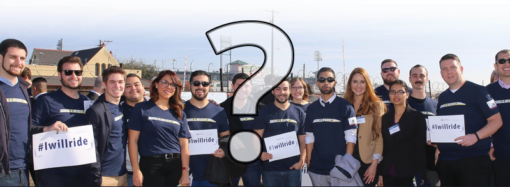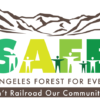It’s pretty amazing that quite a drama is being played out with California’s high-speed rail project (HSR) right before our eyes. Due to a revealing article published by the Los Angeles Times, there are now calls for a subpoena for documents that may prove the Authority and other public officials misrepresented project costs in the 2014 Business Plan.
On October 28, 2015 the California’s Republican Caucus sent a letter to the Speaker of the Assembly asking for a subpoena to obtain records discussed in the Los Angeles Times article. Why?
Because an internal Authority document says that state officials were briefed on higher cost estimates for the first leg of the project. If confirmed this was the case, it was just a few months later those same officials approved the 2014 Business Plan with the lower estimates. They could be found guilty of misrepresenting and misleading the Legislature.
In the LA Times article it says that a confidential 2013 report by the state’s main project management contractor, Parsons Brinckerhoff, estimated that the cost of building the first phase from Burbank to Merced had risen 31% to $40 billion. And it projected that the cost of the entire project would rise at least 5%. This report was received from a project engineer after the LA Times was refused the document under a public records request. It was also reported that ex-VP of Parsons Brinckerhoff and now CEO Jeff Morales did not know of the projections.
We had hints of a financial problem from the URS company, who no longer is working for the Authority, but who was in charge of managing the Fresno to Bakersfield and Bakersfield to Palmdale segment. They had a rather public argument with the Rail Authority that costs for their segments would be $1 billion higher than the Authority wanted to state. This too was back in 2013. They said the Authority was attempting to hold the line on costs and that was why CHSRA didn’t want to accept their number. They fought publicly about this discrepancy.
Rail Authority CEO Jeff Morales replied to the Times article in a comment letter:
“Any infrastructure investment of this size will face risks associated with cost and schedules. To that end, we’ve employed the most advanced risk management strategies available. This approach has resulted in lower costs and faster timelines.”
“There will be bumps along the way, for sure, and we will be forthright about the difficulties, but the article stands in stark contrast to the progress we’re making.”
The blockbuster article by Ralph Vartabetian from the LA Times highlights major issues with California’s High-Speed Rail project. The project has design issues with large scale, complicated tunneling that take a long time to execute, a monumental shortage of funding and delay issues all haunting the project.
While the Authority is busy creating a flurry of public workshop activities all over the state showing how it is “moving forward,” it could be a ruse or as one Central Valley dairy owner said years ago, “I think you’re trying to fake it until you make it.”
However the reality is the rail project is not showing strength, it’s showing increasing signs of weakness.
Both September and October board meetings delivered bad news for the rail project. They are behind schedule, there is a lack of bond funds due to lawsuits and no private investors are ready to pledge their financial support in the immediate future.
First the September 2015 Finance and Audit report highlighted that for many reasons, this project is way behind.
The Authority Operations report reveals they can’t get their hands on the bond funds because of lawsuits. They also admit their forecast is behind, they are behind in getting permits and state that the right of way plans for the Central Valley were too aggressive. They continue to be way behind in buying properties.
There was more bad news at the October 2015 Board meeting when CEO Jeff Morales and board members Richard and Rossi revealed results of the recent Expressions of Interests RFI seeking private investment. The Authority revealed its latest attempt for private investment reaped no takers. There are two basic problems with attracting private investment now. There is no proven ridership and the project is forbidden by Prop 1A to have a subsidy and offer a revenue guaranteed. See Bloomberg’s article about financing the rail project. Here are all the responses on the Authority’s website.
Lou Thompson, Peer Review Chairman, confirmed on several occasions that the money will not come from private investment until the ridership is proven. He says this in a 3/27/2014 State Senate Hearing.
“No private investor money until 2028 or so, only by then there will have been enough experience to see if it performs before people will pay money to buy that revenue stream. The Gap will increase until that point.”
The question is will this latest issue just die away like the other problems in the past? Is burying reports that show cost issues that should have been reported in the 2014 Business Plan OK?
We hope the Speaker of the House, Toni Atkins, will listen carefully and grant the request for the document subpoena and then study it objectively. In the past the Legislature has turned a deaf ear to audit requests to investigate issues with the rail authority, taking the political path instead. We’re hoping this time they will separate themselves from politics. It’s the right thing to do.




